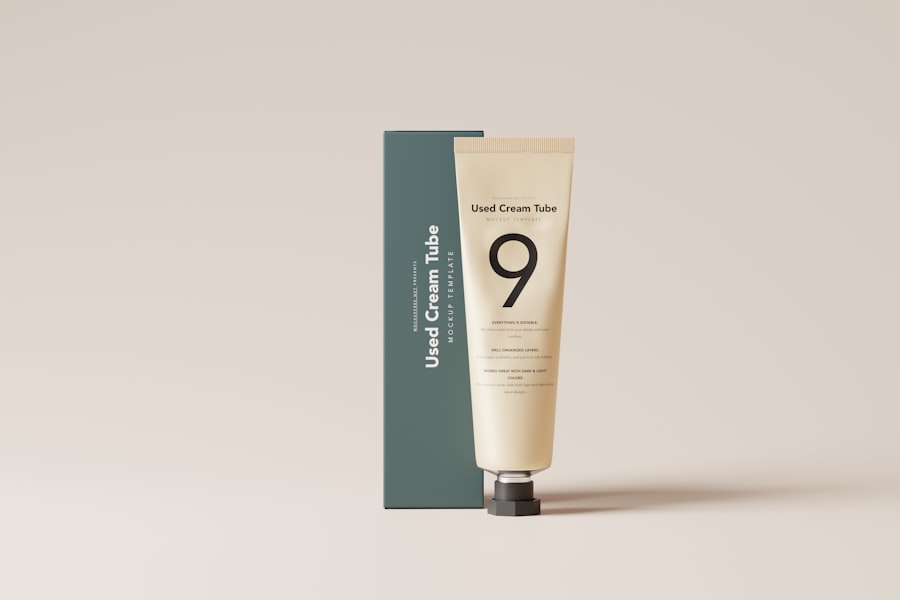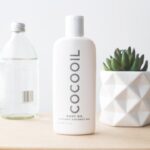After undergoing a treatment, whether it be laser hair removal, waxing, or any other skin procedure, it is crucial to maintain cleanliness in the treated area. You should gently cleanse the area with a mild soap and lukewarm water to remove any residual products or impurities. This step is essential not only for hygiene but also for promoting healing.
By keeping the area clean, you minimize the risk of infection and ensure that your skin can recover effectively. Remember to pat the area dry with a soft towel rather than rubbing it, as friction can irritate sensitive skin. Moisturizing is equally important in your post-treatment care routine.
You should apply a gentle, fragrance-free moisturizer to keep the skin hydrated and to help restore its natural barrier.
Keeping the treated area moisturized will not only help in the healing process but also improve the overall appearance of your skin.
Regularly applying moisturizer can prevent dryness and flakiness, which are common after certain treatments.
Key Takeaways
- Keep the treated area clean and moisturized
- Avoid sun exposure and tanning beds
- Use gentle exfoliation to prevent ingrown hairs
- Avoid hot showers and baths for 24 hours post-treatment
- Wear loose-fitting clothing to prevent irritation
Avoid sun exposure and tanning beds
Avoiding Direct Sunlight
Sun exposure can be particularly damaging to freshly treated skin. You should make it a priority to avoid direct sunlight for at least a few weeks following your procedure. UV rays can cause irritation, pigmentation changes, and even prolong the healing process.
Protecting Your Skin
If you must go outside, consider wearing protective clothing or using an umbrella to shield your skin from the sun’s harmful rays. Additionally, applying a broad-spectrum sunscreen with a high SPF is essential to protect the treated area from potential damage.
Tanning Beds: A Source of Harmful Radiation
Tanning beds are another source of harmful UV radiation that you should steer clear of after your treatment. The intense heat and light from tanning beds can exacerbate irritation and lead to complications such as burns or discoloration.
Prioritizing Sun Protection
It’s best to wait until your skin has fully healed before considering any form of tanning, whether natural or artificial. By prioritizing sun protection, you are taking an important step in ensuring that your skin remains healthy and vibrant.
Use gentle exfoliation to prevent ingrown hairs

Ingrown hairs can be a frustrating side effect of hair removal treatments, but you can take proactive steps to minimize their occurrence. Gentle exfoliation is key in this regard. You should incorporate a mild exfoliating scrub or a soft washcloth into your routine a few days after your treatment.
This will help remove dead skin cells that can clog hair follicles and lead to ingrown hairs. However, be cautious not to over-exfoliate, as this can irritate the skin further. In addition to physical exfoliation, consider using chemical exfoliants containing ingredients like salicylic acid or glycolic acid.
These can help dissolve dead skin cells and keep your pores clear without the need for harsh scrubbing. You should start with a low concentration and gradually increase it as your skin adjusts. By maintaining a regular exfoliation routine, you can significantly reduce the likelihood of ingrown hairs while promoting smoother, healthier skin.
Avoid hot showers and baths for 24 hours post-treatment
| Time Frame | Recommendation |
|---|---|
| Within 24 hours post-treatment | Avoid hot showers and baths |
After your treatment, it’s advisable to avoid hot showers and baths for at least 24 hours. Hot water can increase blood flow to the treated area, leading to heightened sensitivity and potential irritation. Instead, opt for lukewarm water when bathing or showering during this initial recovery period.
This will help keep your skin comfortable while still allowing you to maintain proper hygiene. Additionally, you should be mindful of how long you spend in the shower or bath. Prolonged exposure to water can further aggravate sensitive skin, so keep your bathing sessions brief.
If you enjoy soaking in a bath, consider using Epsom salts or soothing oils that are gentle on the skin once you have passed the initial 24-hour mark. By being cautious with water temperature and duration, you can help ensure a smoother recovery process.
Wear loose-fitting clothing to prevent irritation
The clothing you choose after your treatment can significantly impact your comfort level during recovery. You should opt for loose-fitting garments that allow your skin to breathe and reduce friction against the treated area. Tight clothing can cause unnecessary irritation and may even lead to chafing, which can complicate the healing process.
Soft fabrics like cotton are ideal as they are gentle on the skin and provide comfort. In addition to choosing the right fit, consider the material of your clothing as well. Avoid synthetic fabrics that may trap heat and moisture against your skin, as this can exacerbate irritation.
Instead, prioritize breathable materials that wick away sweat and allow for airflow. By dressing thoughtfully during your recovery period, you can create an environment that promotes healing while keeping discomfort at bay.
Apply aloe vera or cooling gel to soothe any discomfort
If you experience any discomfort following your treatment, applying aloe vera or a cooling gel can provide significant relief. Aloe vera is renowned for its soothing properties and can help calm irritated skin while promoting healing. You should look for pure aloe vera gel without added fragrances or chemicals to ensure it is gentle on your sensitive skin.
Applying it liberally to the treated area can help reduce redness and inflammation. Cooling gels containing menthol or other soothing ingredients can also be beneficial in alleviating discomfort. These gels provide an immediate cooling sensation that can help ease any burning or stinging sensations you may experience post-treatment.
When applying these products, be sure to follow the instructions provided by your technician or on the product label to avoid any adverse reactions. By incorporating these soothing remedies into your post-care routine, you can enhance your comfort level during recovery.
Avoid using any harsh chemicals or fragrances on the treated area
In the days following your treatment, it’s essential to be cautious about what products you apply to your skin. You should avoid using any harsh chemicals or fragrances on the treated area, as these can lead to irritation and hinder the healing process. This includes products like strong exfoliants, alcohol-based toners, or heavily scented lotions that may contain irritating ingredients.
Instead, focus on using gentle, hypoallergenic products designed for sensitive skin. Look for items labeled as fragrance-free and formulated without common irritants such as parabens or sulfates. By choosing milder alternatives, you can help ensure that your skin remains calm and free from unnecessary stress during its recovery phase.
This careful approach will contribute positively to your overall healing experience.
Follow up with any recommended post-care treatments from your technician
Finally, one of the most important aspects of post-treatment care is adhering to any recommendations provided by your technician. They are trained professionals who understand the specific needs of your skin following a procedure and can offer tailored advice for optimal recovery. You should take their guidance seriously and follow their instructions closely to achieve the best possible results.
This may include scheduling follow-up appointments for additional treatments or check-ins to monitor your progress. Your technician may also recommend specific products or routines that align with your individual needs based on the treatment you received. By staying engaged with their recommendations and maintaining open communication, you can ensure that you are taking all necessary steps toward achieving healthy, beautiful skin post-treatment.
In conclusion, taking care of your skin after a treatment is essential for ensuring optimal results and minimizing discomfort. By keeping the treated area clean and moisturized, avoiding sun exposure, using gentle exfoliation techniques, and following other recommended practices, you set yourself up for success in your recovery journey. Remember that patience is key; give your skin time to heal properly while adhering to these guidelines for a smoother experience overall.
After undergoing laser hair removal treatment, it is crucial to follow proper aftercare instructions to ensure optimal results. One important aspect of aftercare is avoiding sun exposure, as it can increase the risk of complications. To learn more about how to protect your skin post-laser hair removal, check out this informative article on sun protection tips. By following these guidelines, you can maintain smooth and hair-free skin for longer periods.
FAQs
What is laser hair removal aftercare?
Laser hair removal aftercare refers to the steps and precautions that should be taken after undergoing a laser hair removal treatment to ensure proper healing and optimal results.
What are the do’s of laser hair removal aftercare?
Some common do’s of laser hair removal aftercare include keeping the treated area clean and moisturized, avoiding sun exposure, wearing loose clothing, and following the specific aftercare instructions provided by the treatment provider.
How should I clean the treated area after laser hair removal?
It is recommended to gently cleanse the treated area with a mild, non-abrasive cleanser and lukewarm water. Avoid using harsh exfoliants or scrubs on the treated area.
Can I moisturize the treated area after laser hair removal?
Yes, it is important to keep the treated area moisturized with a gentle, non-comedogenic moisturizer to help soothe the skin and promote healing.
Why should I avoid sun exposure after laser hair removal?
Sun exposure can increase the risk of complications such as hyperpigmentation and skin sensitivity after laser hair removal. It is important to protect the treated area from direct sunlight and use sunscreen if going outdoors.
Is it important to follow the specific aftercare instructions provided by the treatment provider?
Yes, following the specific aftercare instructions provided by the treatment provider is crucial for ensuring proper healing and achieving the best results from the laser hair removal treatment.







